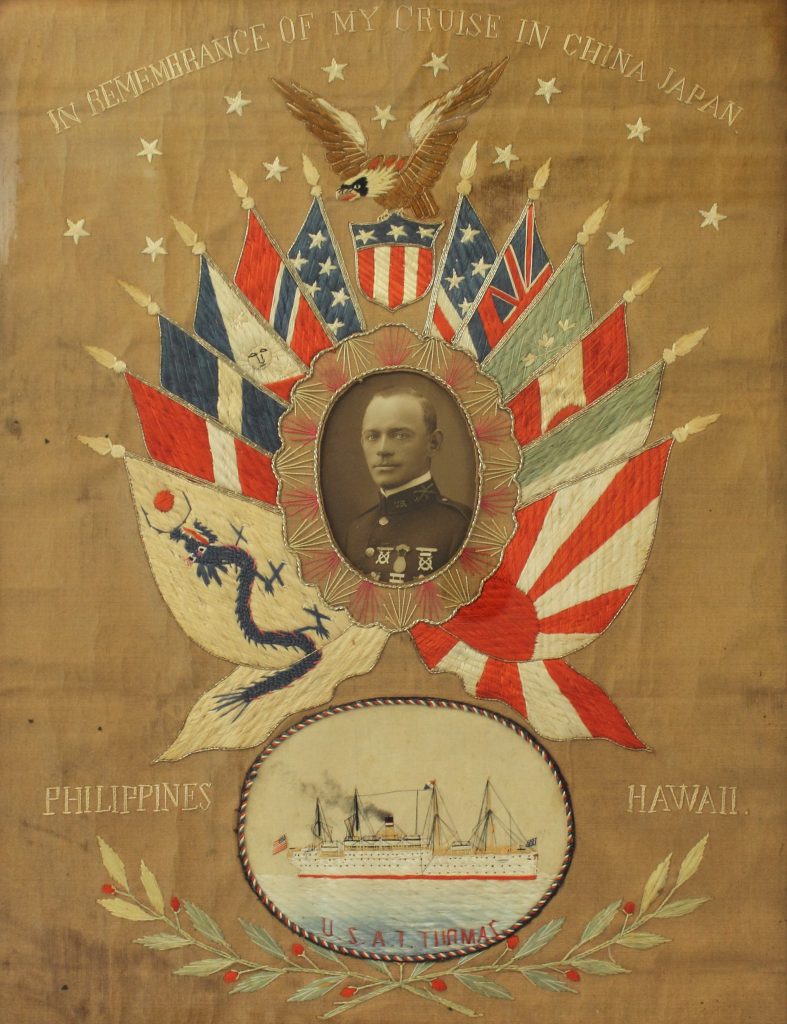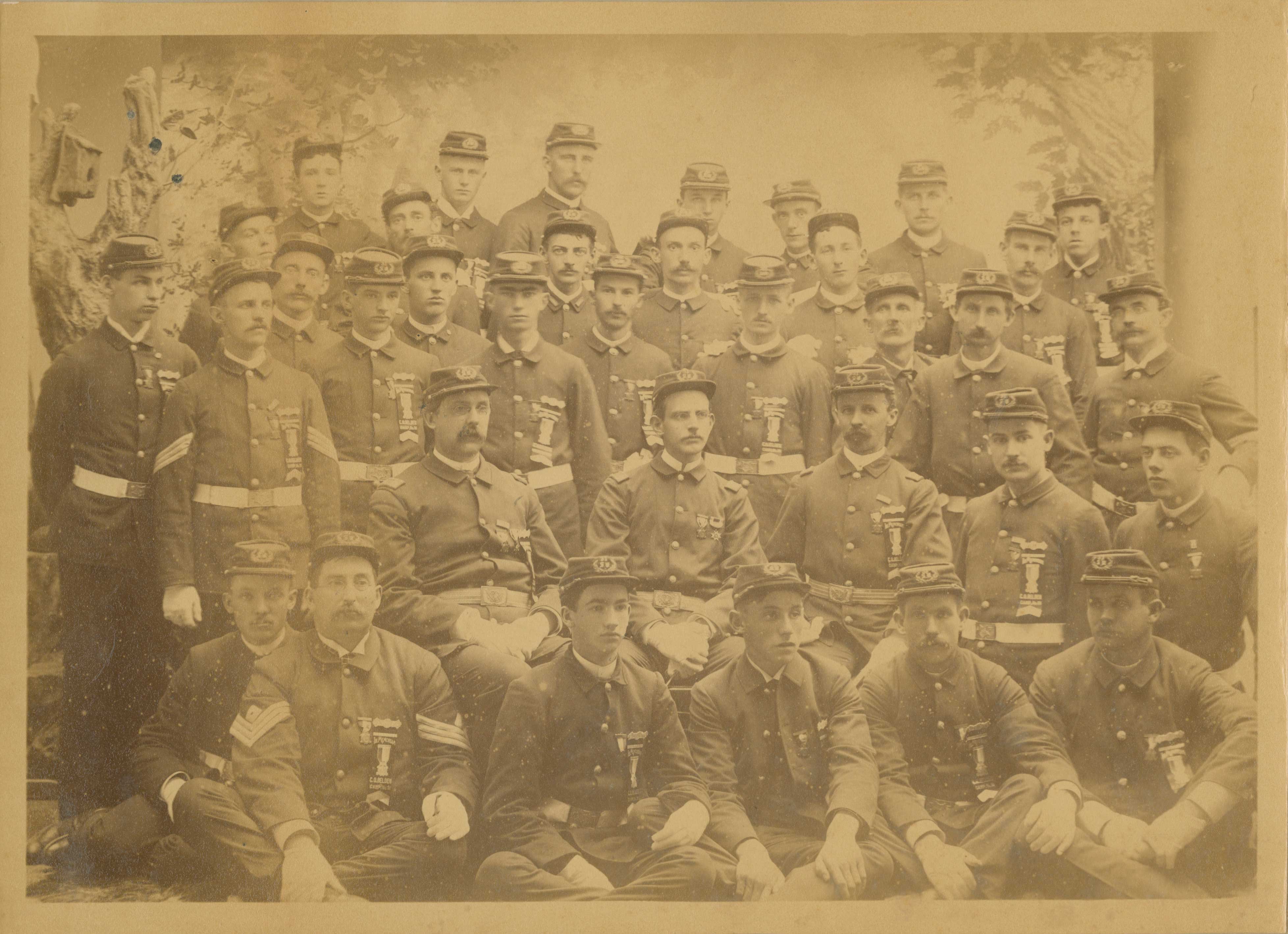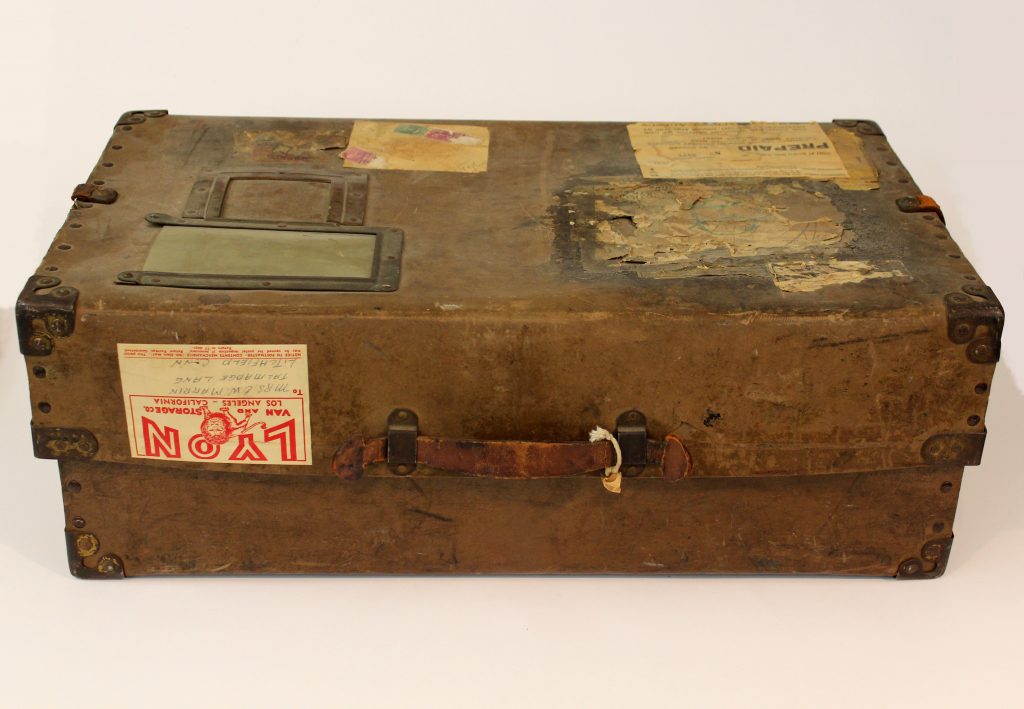As an institution dedicated to documenting and sharing our town’s history, the Litchfield Historical Society is primarily a collector of stories. Sometimes, those stories come in unusual, and even unfamiliar, packages. When a regular supporter of the Society donated this ceramic and glass vessel to our museum collection, it set me on a research path that began in Litchfield, moved to the American South, and ended in Central Africa.
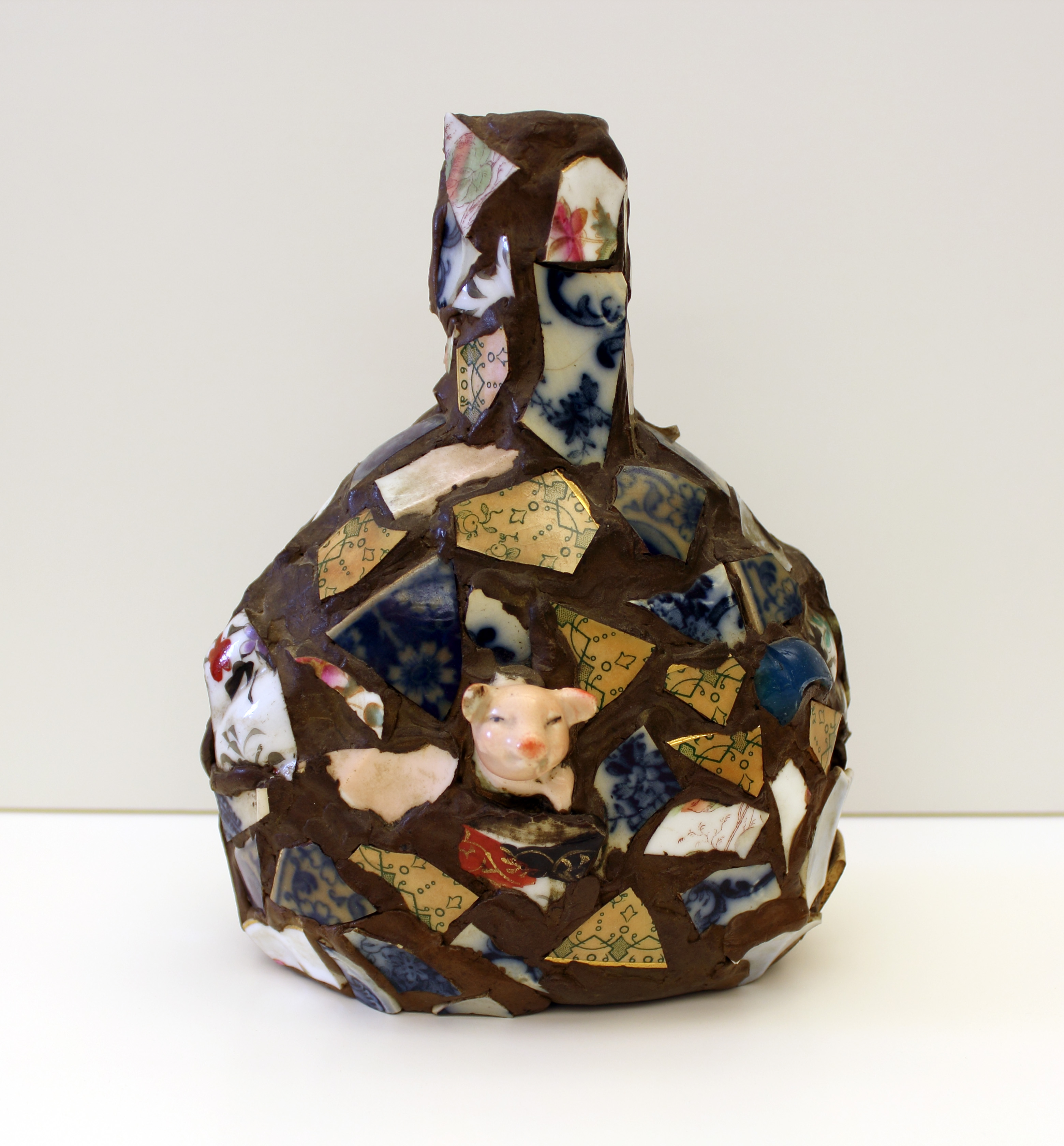
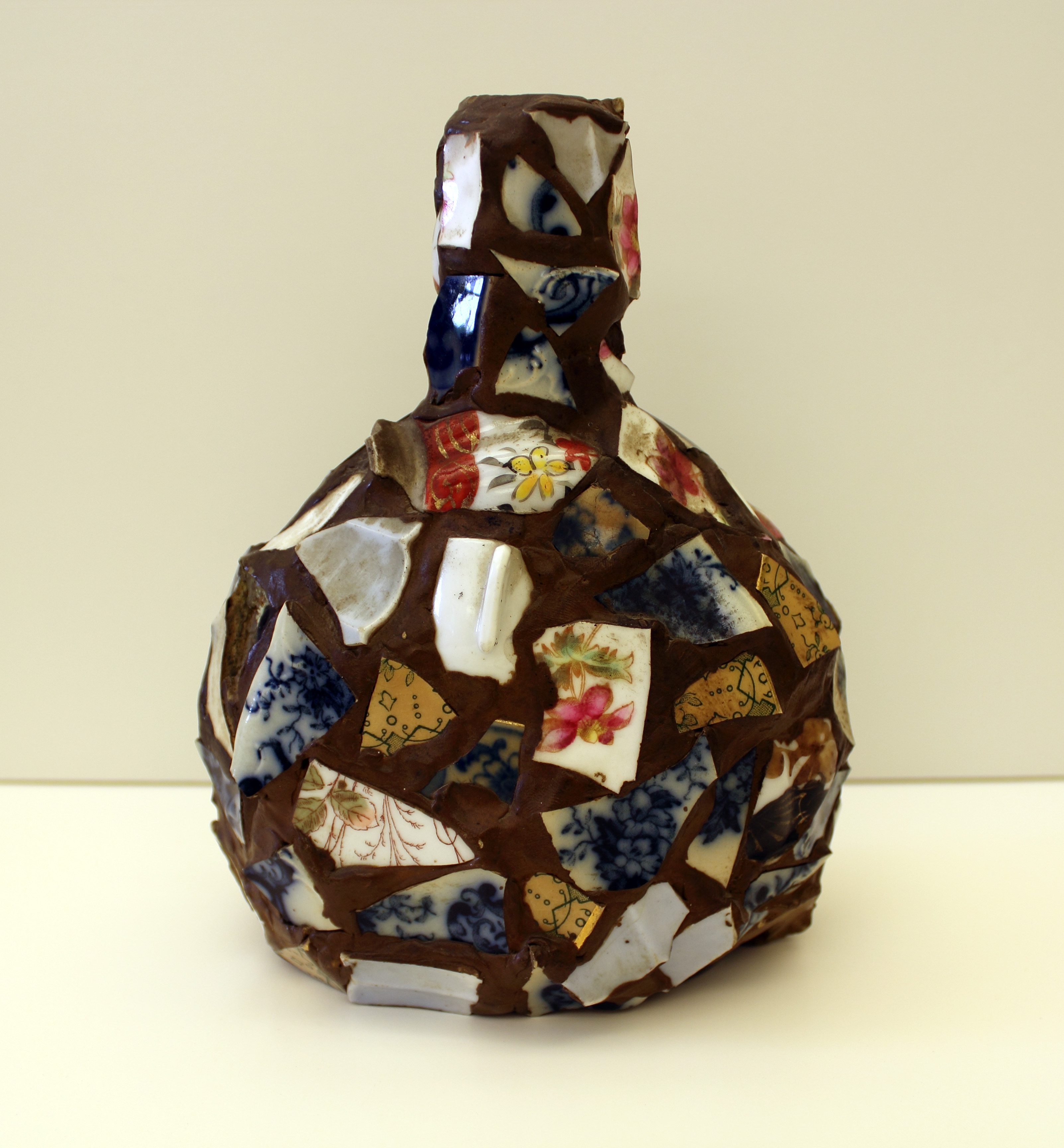
The vessel is striking in its appearance and composition, formed by covering a commercially produced glass bottle with clay or putty. Ceramic fragments were pressed into the clay while it was wet to form a mosaic of colors, patterns, and shapes. The most noticeable (and charming) feature of the mosaic is a pink, petite pig head poking out from the center of one side.
This piece is the first and only memory jug (also commonly called a memory vessel or jar) in the Litchfield Historical Society collection. Memory jugs are complicated objects, representing a craft tradition informed by African cultural and religious beliefs, imported to America by those forcibly enslaved, and later popularized through the sentimental culture of the Victorian era. This memory jug dates to the turn of the twentieth century (1890-1910) and was made in Northfield, a village in the town of Litchfield. It was likely crafted by Hattie Davida Gustafson Blakeslee (1890-1963) or her mother, Christina Nilson Gustafson (1857-1931), using ceramic fragments found in the trash pit or midden on the family farm.
Continue reading